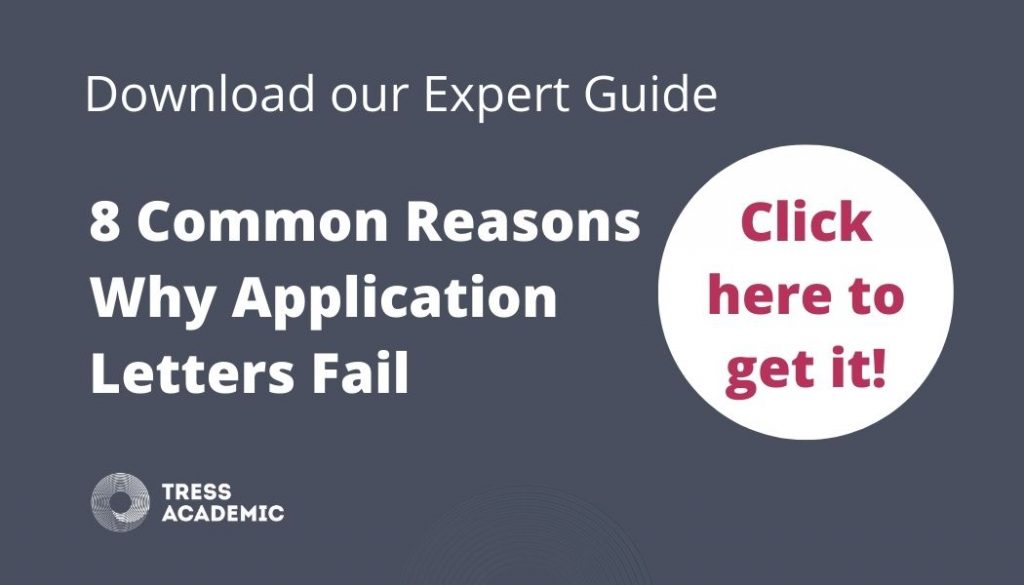As a PhD candidate or post-doc, you might think that your research achievements, expertise and specialisation speak for themselves when applying for an academic position. Not quite. Aside from sound academic credentials, you need to communicate your achievements convincingly to the hiring committee to prove that you are worth an invitation to interview. In this post, we’ll lay out 5 strategies you can use to optimise your application material and enhance your chances of getting the job you’re looking for!
If you are currently in the process of applying for an academic position, you might think that your hard work, good qualifications, degrees from prestigious universities, or world-class supervisor will do their magic and land you a job. It’s easy to assume that solid work experience and outstanding track-records will reveal themselves and pave your way to an interview. Well, that’s not quite how it works. While these may be helpful ingredients, the most delicious job application is the one that goes the extra mile: You serve your expertise, as well as your qualifications to the hiring committee on a silver platter. You minimise their work when you explicitly present what they are looking for. You are the candidate who knows how to communicate and how to organise the information in your job application so it is a joy for the search committee to read and makes them think ‘wow, that’s exactly what we are looking for.’ In this blogpost, we’ll show you 5 strategies that will go down a treat with the hiring crew and transform your career prospects.
1. Stellar layout and visual appearance
The visual appeal of your application is easy to enhance and yet so obvious that you may have simply forgotten about it. Give us a bunch of cover letters and CVs which are poorly formatted, set in boring and common fonts, in plain black-and-white, and we bet they’ll rank lower in the list of potential candidates than those which look great, are superbly organised and display your personality in the selection of fonts and colours.
To understand how important layout and visual appearance are, step into the shoes of a selection committee member: They likely have a high number of job applications to read, and they must filter out the best candidates in the fastest possible way. After the first few, attention fades and they’ll start looking for attention-grabbing shortcuts which quickly reveal the most important information they are looking for. How much attention do you think you’ll grab with a not-so-well organised CV in a barely readable font size, without proper headings and logical structure in plain black-and-white? Right, they’ll probably give up half-way through (and before they’ve spotted your paper in Nature in the list of publications on the last page).
Make sure your CV and other application material looks great, is unique, and conveys your personality. Use big and bold headings to structure your information so it highlights your achievements and is readily accessible. See our blogpost no. 18, CV-makeover: revamp the design of yours, for clear instructions on how to improve yours – we’ve a great worksheet included there as well.
2. Provide evidence-based application material
Application material that communicates what you want, is easy to read and brings your strengths to the forefront in a convincing and evidence based way is a game changer. Much information in an academic CV is a ‘coded’ message. Let us explain that with an example: If we see a list with 73 conference presentations, held over a decade at international scientific meetings in an application for a professorship, we – as selection committee members – are not interested in what exactly you presented or where you gave a talk. We’ll look at the list and the sheer number communicates the message ‘awesome scholar, intensely engaged in the scientific community on an international level, must be well-known, and if hired, will continue to get their science out into the academic world.’ That’s the point you make with your complete list of presentations.
In contrast, give us a CV with the heading ‘selected talks’ that lists 5-10 presentations over a decade, our hunch is that you were either not able to list more (= poor track record) or too lazy to list them (= not a good prospect for a future colleague), or you never kept a record of the events you attended (= not well-organised). None of these features will secure you a spot in the interview.
3. State what you bring to the table
A frequent feature in applications, especially in the cover letter, is to go into detail on why you want a particular job and list all the amazing research and related activities it would enable YOU to do or to achieve if you were hired. Nice, but missing the point.
As a hiring committee, we’re not interested in how YOU benefit from being hired, but in how we as an institute or organisation benefit when we hire you. That’s it. So instead of dwelling on how great it would be for you to get the job, give us the details on how you’ll contribute to what we want to achieve (see Tomaska L, Nosek J 2018).
Describe what you bring to the table: How will you help us with the courses you’ll teach in our programmes, how will you raise our public profile, how will you contribute to our excellence in research? That’s what we want to know – if you find this beneficial for yourself at the same time, even better.
4. Respond directly to requirements of the position
If you want to irritate a hiring committee, ignore what is written in the job advertisement and send an application that looks as if you’ve used it for a variety of job searches in the past. Before a job advertisement is published, there were likely a range of meetings among the committee members to determine the job requirements, skills and profile of the ideal candidate. If the committee did a good job, they’ll have listed the exact features and skills crucial for a good fit.
Ignoring those, or glossing over them, is a pretty good way to make sure you’ll not be shortlisted for an interview. Instead, read that advertisement and read it again. Mark every single requirement or skill that is mentioned. Think about how you can demonstrate that you’ll fulfill that exact requirement – with evidence, please! You need to address those requirements in your cover letter and include them in your CV. If you are responding to a well-structured advertisement, you may even be able to use that exact structure as an outline for your cover letter.

5. Optimise for online and offline use
Not so long ago, every incoming job application would get printed and distributed to the members of the selection committee on paper. So colours, shading, text size, layout etc. had to work when printed on paper. Nowadays you should optimise for both online and offline use. While our hunch is that the majority of job applications (since they are all submitted online) are read and annotated online, some odd committee members may still find it useful to print every single application and scribble their comments on the paper copy.
Once you’ve finalised your application documents, run through them thoroughly online and see that it works in this format, then print a copy and make sure it looks good printed as well. For example, some font sizes may be legible in an electronic format, but will be too small to read on a printed document. While most colours will look good and work in the electronic version, they do not necessarily work in print. Page numbers are not that important in the electronic version (who will manage to screw up a pdf-file?), but are important in print, if pages are mixed up.
Conclusion:
For your next job application, try to adopt the perspective of the hiring committee and use the strategies above in order to improve your material in a way that makes it easier for them to understand your expertise. Not only will it make for a more pleasant experience for them when reviewing incoming applications, but you will present yourself as an effective communicator. You may be among the few applicants who truly demonstrates that they have understood what the committee is looking for and manages to communicate that convincingly.

Related resources:
- SMART ACADEMICS blog post #31: Six smart strategies for a strong Academic CV
- SMART ACADEMICS blog post #18: CV-makeover: revamp the design of yours
- Expert Guide: 8 common reasons why cover letters fail.
- Ten simple rules for writing a cover letter to accompany a job application for an academic position
- Tomaska L, Nosek J (2018) Ten simple rules for writing a cover letter to accompany a job application for an academic position. PLoS Comput Biol 14(5): e1006132.
Related courses:
- How to apply for an academic staff position (3-day course)
- Presenting successfully at Virtual Conferences (1-day course)
- 1-to-1 advice “Job Application Check”
More information
Do you want to apply for an academic job?
If so, please sign up to receive our free guides.
Photograph by Gpointstudio at freepik
© 2023 Tress Academic
